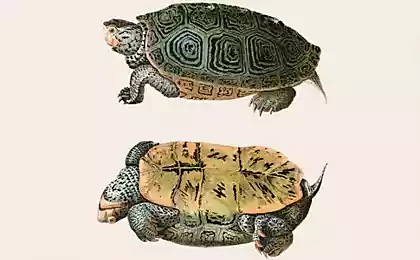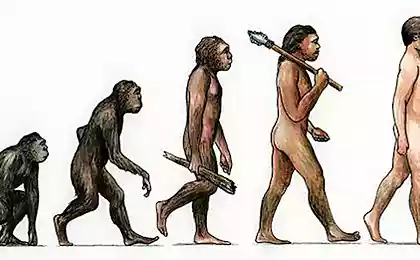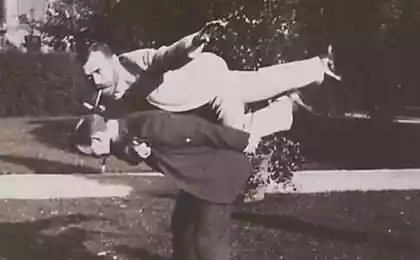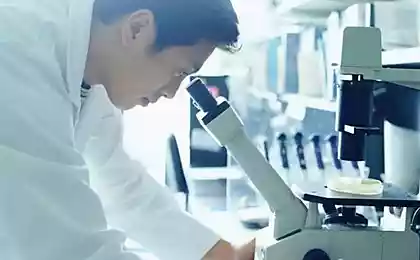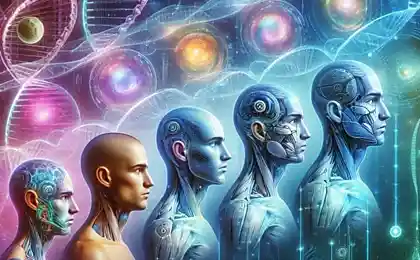345
Alexander Markov: Normally, altruists should be rejected.
“Normally, altruists should be rejected despite being useful to the group.”
Interview with biologist Alexander Markov on genes of altruism, evolutionary selection and refusal to reproduce.
The material was prepared on the basis of the radio program "PostScience" on the radio Russian News Service. Leading — Editor-in-Chief of the PostScience project Ivar Maksutov, guest of the air — Alexander Markov, Doctor of Biological Sciences, Leading Researcher of the Paleontological Institute of the Russian Academy of Sciences, Professor ESH, Head of the Department of Biological Evolution of the Biological Faculty of Moscow State University.
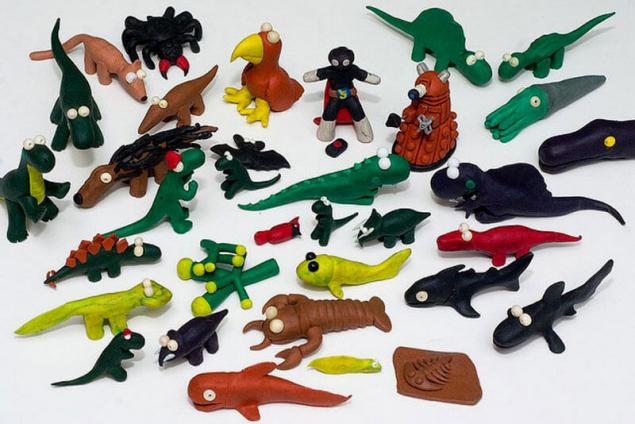
- It seems to many that altruism is a counterargument against the theory of evolution and the evolutionary development of life in general. Is that true?
- Yes, there is an opinion among people far from biology that evolutionary theory cannot explain the emergence of sacrificial behavior, when an individual suddenly sacrifices his vested interests for some other individuals. At first glance, it may seem that such behavior must be ruthlessly rejected by selection. It is true that we do not often meet with the manifestation of sacrifice in nature, but there are such cases.
- A naive interpretation of Darwin’s theory says that because the fittest survive, he must kill everyone and do bad things.
- That's right. Just "survival of the fittest" is a very crooked formulation. The strongest does not always survive, but there are many different ways to increase the efficiency of reproduction of their own genes.
- What is the nature of altruism? Evolutionary?
- Perhaps we should first clarify what we mean by altruism, when we are not talking about people, but about other living beings. Some experts do not like to use the term “altruism”, considering it too anthropomorphic, and replace it with some other words. But let’s just agree that when we say “altruism”, we will not mean people, but the behavior of an individual that leads to an increase in fitness, that is, the reproductive success of other individuals, and to a decrease in fitness of its own, such behavior can be conventionally agreed to be called altruistic. What are its roots?
In fact, this is one of the favorite problems for evolutionary biologists. How do you explain it? At first glance, this seems difficult to explain, at second glance, it seems easy if group selection is involved. The altruistic behavior of an individual is useful for groups, which means that those groups in which there are many altruists will win and reproduce better, and those groups where there are few altruists will, accordingly, die out, lose, and so on. It is in this spirit that Darwin expressed himself in his book The Descent of Man and Sexual Selection. There he actually drew attention to the fact of wars, intergroup enmity, and wrote that, obviously, those tribes of our ancestors, in which there were more courageous, honest, valiant, that is, altruistic, as we say, members, defeated those tribes where only egoists prevailed, and, accordingly, they became more.
The problems began when biologists began to build mathematical models and test these thoughts with simple mathematical models and then computer models. And they saw that it was not easy to find the conditions in which this group selection worked in its pure form. Because the group may benefit from your altruism, but the inside is different. If you compare yourself to other members of the group, being an altruist is by definition unprofitable. Accordingly, individual selection within the group will work, which will reduce the proportion of altruists, that is, altruists will be rejected. It may be a thousand times useful for a group to have altruists, but if they are altruists, then they are sacrificing their reproductive success for the sake of others, then there are fewer of them, and there are more egoists automatically. Group selection is weaker than individual selection. And it turns out from the models that normally altruists should be rejected, despite the fact that they are useful for the group.
- Reproductive function is crucial. So not so much the allocation of resources, but the ability to pass on your own genes?
- Evolutionarily, yes. If we are talking specifically about biological evolution, then only the effectiveness of the reproduction of one’s own genes matters, and this is fitness. Everything else comes down to that.
- Are certain conditions necessary for altruistic behavior?
- Yeah. Biologists have been searching for such conditions quite effectively for the past 50 years. A serious study of these mechanisms began somewhere in the 60s. Including a great contribution William Hamilton, the great English theorist, made to these works. The most effective and convincing theory to date is called the theory of related selection.
The essence of the theory of related selection was very well expressed at the time by the great biologist John Haldane, who said that he was ready to give his life to save two siblings or eight cousins. The thing is that evolution is based on the spread of genes. A gene, or rather a genetic variant (allelele), is not a single object, each allele is present in a population in the form of many copies. And where evolution will go depends on the fate of all these copies, whether there will be more or fewer copies in the next generation. Genes are “interested” in getting more of them, and sometimes it is advantageous for a gene that influences behavior to sacrifice one or two copies of itself in order to give an advantage to other copies of itself that are contained in other organisms. As a result, the organism sacrifices itself for other organisms, but because there are copies of the same gene in these other organisms, the gene serves its own vested interests. Copies of this behavioral gene will get bigger. This gene we call the altruism genome.
- It is assumed that in eight cousins this genetic material, these alleles are less likely to be present than in the case of brothers.
- Yeah, that's right. So if you have a sibling and you have a gene for altruism, the probability that your sibling also has this gene for altruism is one second. We are talking about kinship selection, there is an indicator of the degree of kinship, here we have a kinship with a brother of 0.5, and the degree of kinship with a cousin we have one eighth.
- Got it. Does this logic have any real biological examples, any animal examples?
- Now it is fashionable to criticize the theory of related selection, but in fact it seems to me that this theory can not be refuted in any way. First of all, because it's strict logic. There is a simple inequality, the gene of altruism will be supported by selection, that is, its frequency will increase if RB>C, where R is the degree of kinship, B is the value of the gain that the recipient of the altruistic act receives, that is, the benefit of altruism, and C is the price that the altruist pays for this altruistic act. If R is multiplied by B more than C, then the altruism gene, whether we like it or not, will propagate, increase its frequency, and that's it. This is proved as Pythagorean theorem. Here we have defined the variables R, B and C, and it simply follows that when this inequality is fulfilled, the altruism gene will spread, so there is nothing to refute. Another thing is how often this effect occurs in real nature, how often this circumstance is important. Apparently, this often turns out to be important, because if we look at real cases of altruism, self-sacrifice in nature, then for the most part these are cases when living beings sacrifice their interests precisely for the sake of relatives, for the sake of close relatives. They're often clones.
Clones are a set of genetically identical individuals that occurred as a result of asexual reproduction from one ancestor. For example, aphids, insect pests, reproduce both sexually and asexually. And the female can lead by parthenogenesis many descendants that are genetically identical to her, so this will be a clone. In such a clone, altruism is possible. Even now, some parasites have found such altruism, when there is also clonal reproduction and many genetically identical parasites sitting in the snail, and some of them sacrifice their own reproduction, engage in the fact that they find and kill other parasites that are trying to get into the same snail. So these are warrior parasites, they don't reproduce, instead they pounce on and kill competing parasites.
- So their altruism is that they refuse to reproduce in order to protect other copies and ensure their survival?
- Yes, to protect your asexual brothers or sisters. They're all genetically identical, so R, that very degree of kinship, is one, and these are ideal conditions for kin selection to support altruism. And it is in such cases that we often find this altruism. Of insects, the most widespread altruism in the form of refusal to reproduce and help other individuals received from Hymenoptera insects, these are well-known wasps, bees, ants, in which usually one female and one or several males reproduce in the family, and all other individuals are working individuals that do not reproduce, but only help the queen grow her offspring. Why are they? Hamilton also offered a possible explanation for why this particular group of insects did so. They have a very unusual system of gender inheritance.
I won’t go into details, but the point is that Hymenoptera sisters are more closely related than mother and daughter. Sisters, two bees, or wasps have a kinship coefficient of 0.75 and share three-quarters of their genes. And the mother and her daughter have 0.5, like us, as well as all animals, so there are very strong prerequisites for the individual to prefer the care of sisters to the birth of their own children, which, in fact, ants, bees and so on do. But there are still, however, termites, these insects are also social, which have the same eusociality, that is, workers refuse to reproduce, and they do not have this feature, their children and brothers have R = 0.5. But termites adopt monogamy, that is, one female - one male. What maximizes the degree of kinship between brothers and sisters? In this Hamilton formula, R is 0.5. If parents are faithful to each other, one father, one mother, then all children get R = 0.5, the same as between parents and children. That is, any trifle is enough here to tip the scales in the direction of caring for brothers and sisters, and not in favor of the institution of their children. This is all very well explained from the position of related selection.
Finally, another perfectly clear example of the power of the theory of related selection is the following. This is a multicellular organism, because it was formed from a commonwealth of single-celled organisms, right? Cells have ceased to diverge, some of the cells are germ cells, they have the opportunity to transfer their genes to offspring, and all the other cells of a multicellular organism as if altruistically refuse their own reproduction, sacrifice themselves, the ability to leave their genes in the next generations in order for a small part of the cells to multiply. That is, in the first stages of the formation of a multicellular organism from a colony of unicellular is a typical altruism.
- This is an amazing example in fact, because we are always used to looking at a situation like this differently. But in fact, even the very logic that we serve our own genes is also a form of altruism, which is that our organism itself, in fact, and all the variety of complex forms, serves a very limited number of cells that must be transmitted and transformed in a certain way. How does this whole story explain the relations within such communities and the phenomenon of social parasitism?
- I have given this example of multicellular organisms to explain the problem of social parasitism and to show the power of the theory of related selection. Throughout evolution, there have been many attempts to create a multicellular organism out of a multitude of unicellular ones, and we now see some intermediate forms in nature. But there are basically two ways. You can get different single-celled organisms to come together and build a multicellular organism, and some bacteria, some single-celled, more complex organisms try to do that. But these attempts never went far. Only the simplest, most primitive multicellular, say fruit bodies, are formed. And a really promising way to create a multicellular organism was another way, when a multicellular organism is formed from the descendants of a single cell. The cell divides, its descendants are genetically identical, and they are very good at finding common language with each other and are capable of altruism. Why? Because they have R equal to one, because they are genetically identical.
And what happens when R is less than one, as when many amoebas slide together and build a fruit body together? There are colonial, social amoebas that live separately, and when there is little food, they secrete special call signals, slide into a bunch, form such plasmodium, crawl together, and then turn into a fruit body, in which part of these amoebas turn into spores and can survive hard times and continue the race, but part dies because they go to build the legs of the fruit body and can not turn into spores, that is, here again altruism. A certain altruism is required from some of these amoebas.
- Do I understand correctly that reproduction, i.e., the development of a multicellular organism through reproduction from the original cell, is possible primarily because the altruism of these cells is due to the fact that they have, as it were, a single genetic material, a common R is equal to one, it is thanks to this that the construction of this organism is possible, because they are willing to sacrifice for each other?
- Exactly. They have no preconditions for cheating, for selfishness. With R=1, it doesn’t matter whether you care about yourself or your neighbor, you are genetically identical. If you can sacrifice yourself to help one or two neighboring cells, then selection will support the mutation that leads you to this behavior.
- To what extent is it possible for Homo sapiens to sacrifice their own reproductive functions for the development and enhancement of reproductive functions in another?
- As you know, people often do this. If we take the cases of war, for example, it is obvious: people pick up a club or a gun and risk their lives for the benefit of their group.
- But here we can say that certain social, religious, ideological, ideological patterns determine their behavior. That is, they do it not because their biological nature pushes them to do it, but because there are certain moral, ethical, religious, philosophical attitudes.
- You know, the moral, ethical, religious attitudes in every nation, in every tribe, in every epoch are different, but everyone is at war and has always fought. People in the Stone Age frantically cut each other's skulls with clubs, and this has been the case since time immemorial. That is, it gives good reason to assume that the propensity to be hostile to strangers for their own sake, the tendency to risk life and health in order to help their own, stuffing the face of strangers, a behavior called parochial altruism - it is almost certainly written in our genes, roughly speaking. So the genes that make us more likely to learn this behavior quickly and easily were, of course, selected. This is an evolutionary tendency, it is very developed. Dividing into one’s own and another’s, and then sacrificing life and health for one’s own, harming others, is typical of Homo sapiens in the highest degree.
- So, in principle, nationalist behavior is absolutely evolutionary?
- It is the simplest, the most primitive for Homo sapiens, it is not necessary to learn: these in gray skins are their own, and those in yellow skins are strangers, for these you must die, and those you must kill - this is the most primitive of our human psychology, which almost does not need to learn. And so it is so easy to persuade the crowd to such behavior: we are our own, they are strangers, go ahead, destroy.
- Are there any studies or facts regarding the prevalence of altruism, altruistic behavior in hominids? That is, was Australopithecus different from Neanderthal, Neanderthal from Homo sapiens and so on?
- We don’t have genetic data on early hominids, we don’t have any genetic data, we only know that Homo erectus is an early species that lived 1.8 million years ago. The oldest clear indication of altruism, a behavior atypical of apes, is the skull of a toothless old man found in Georgia, a Georgian man (Homo georgius), a transition between habilis and erectus. Toothless old man or, rather, an old woman who, having lost all her teeth, lived for a long time (after losing her teeth, the holes thickened), respectively, someone fed her, her relatives fed her. This is a purely human altruism, a behavior not peculiar to other apes or to a lesser extent. That is, apparently, already in the early stages, somewhere 2-3 million, maybe 4 million years ago, in our hominid lineage, the tendency to mutual assistance within a cohesive group has already developed. Apparently, due to the change in lifestyle, the fact that our ancestors began to live in the savannah, hunt big game, or they were first scavengers, all these strategies require higher cooperation than the way of life that lead, say, chimpanzees, although they also have cooperation.
Alexander Markov, Doctor of Biological Sciences, Leading Researcher of the Paleontological Institute of the Russian Academy of Sciences, Professor of the Russian Academy of Sciences, Head of the Department of Biological Evolution of the Biological Faculty of the Moscow State University
P.S. And remember, just changing our consumption – together we change the world!
Source: postnauka.ru/talks/25926
Interview with biologist Alexander Markov on genes of altruism, evolutionary selection and refusal to reproduce.
The material was prepared on the basis of the radio program "PostScience" on the radio Russian News Service. Leading — Editor-in-Chief of the PostScience project Ivar Maksutov, guest of the air — Alexander Markov, Doctor of Biological Sciences, Leading Researcher of the Paleontological Institute of the Russian Academy of Sciences, Professor ESH, Head of the Department of Biological Evolution of the Biological Faculty of Moscow State University.

- It seems to many that altruism is a counterargument against the theory of evolution and the evolutionary development of life in general. Is that true?
- Yes, there is an opinion among people far from biology that evolutionary theory cannot explain the emergence of sacrificial behavior, when an individual suddenly sacrifices his vested interests for some other individuals. At first glance, it may seem that such behavior must be ruthlessly rejected by selection. It is true that we do not often meet with the manifestation of sacrifice in nature, but there are such cases.
- A naive interpretation of Darwin’s theory says that because the fittest survive, he must kill everyone and do bad things.
- That's right. Just "survival of the fittest" is a very crooked formulation. The strongest does not always survive, but there are many different ways to increase the efficiency of reproduction of their own genes.
- What is the nature of altruism? Evolutionary?
- Perhaps we should first clarify what we mean by altruism, when we are not talking about people, but about other living beings. Some experts do not like to use the term “altruism”, considering it too anthropomorphic, and replace it with some other words. But let’s just agree that when we say “altruism”, we will not mean people, but the behavior of an individual that leads to an increase in fitness, that is, the reproductive success of other individuals, and to a decrease in fitness of its own, such behavior can be conventionally agreed to be called altruistic. What are its roots?
In fact, this is one of the favorite problems for evolutionary biologists. How do you explain it? At first glance, this seems difficult to explain, at second glance, it seems easy if group selection is involved. The altruistic behavior of an individual is useful for groups, which means that those groups in which there are many altruists will win and reproduce better, and those groups where there are few altruists will, accordingly, die out, lose, and so on. It is in this spirit that Darwin expressed himself in his book The Descent of Man and Sexual Selection. There he actually drew attention to the fact of wars, intergroup enmity, and wrote that, obviously, those tribes of our ancestors, in which there were more courageous, honest, valiant, that is, altruistic, as we say, members, defeated those tribes where only egoists prevailed, and, accordingly, they became more.
The problems began when biologists began to build mathematical models and test these thoughts with simple mathematical models and then computer models. And they saw that it was not easy to find the conditions in which this group selection worked in its pure form. Because the group may benefit from your altruism, but the inside is different. If you compare yourself to other members of the group, being an altruist is by definition unprofitable. Accordingly, individual selection within the group will work, which will reduce the proportion of altruists, that is, altruists will be rejected. It may be a thousand times useful for a group to have altruists, but if they are altruists, then they are sacrificing their reproductive success for the sake of others, then there are fewer of them, and there are more egoists automatically. Group selection is weaker than individual selection. And it turns out from the models that normally altruists should be rejected, despite the fact that they are useful for the group.
- Reproductive function is crucial. So not so much the allocation of resources, but the ability to pass on your own genes?
- Evolutionarily, yes. If we are talking specifically about biological evolution, then only the effectiveness of the reproduction of one’s own genes matters, and this is fitness. Everything else comes down to that.
- Are certain conditions necessary for altruistic behavior?
- Yeah. Biologists have been searching for such conditions quite effectively for the past 50 years. A serious study of these mechanisms began somewhere in the 60s. Including a great contribution William Hamilton, the great English theorist, made to these works. The most effective and convincing theory to date is called the theory of related selection.
The essence of the theory of related selection was very well expressed at the time by the great biologist John Haldane, who said that he was ready to give his life to save two siblings or eight cousins. The thing is that evolution is based on the spread of genes. A gene, or rather a genetic variant (allelele), is not a single object, each allele is present in a population in the form of many copies. And where evolution will go depends on the fate of all these copies, whether there will be more or fewer copies in the next generation. Genes are “interested” in getting more of them, and sometimes it is advantageous for a gene that influences behavior to sacrifice one or two copies of itself in order to give an advantage to other copies of itself that are contained in other organisms. As a result, the organism sacrifices itself for other organisms, but because there are copies of the same gene in these other organisms, the gene serves its own vested interests. Copies of this behavioral gene will get bigger. This gene we call the altruism genome.
- It is assumed that in eight cousins this genetic material, these alleles are less likely to be present than in the case of brothers.
- Yeah, that's right. So if you have a sibling and you have a gene for altruism, the probability that your sibling also has this gene for altruism is one second. We are talking about kinship selection, there is an indicator of the degree of kinship, here we have a kinship with a brother of 0.5, and the degree of kinship with a cousin we have one eighth.
- Got it. Does this logic have any real biological examples, any animal examples?
- Now it is fashionable to criticize the theory of related selection, but in fact it seems to me that this theory can not be refuted in any way. First of all, because it's strict logic. There is a simple inequality, the gene of altruism will be supported by selection, that is, its frequency will increase if RB>C, where R is the degree of kinship, B is the value of the gain that the recipient of the altruistic act receives, that is, the benefit of altruism, and C is the price that the altruist pays for this altruistic act. If R is multiplied by B more than C, then the altruism gene, whether we like it or not, will propagate, increase its frequency, and that's it. This is proved as Pythagorean theorem. Here we have defined the variables R, B and C, and it simply follows that when this inequality is fulfilled, the altruism gene will spread, so there is nothing to refute. Another thing is how often this effect occurs in real nature, how often this circumstance is important. Apparently, this often turns out to be important, because if we look at real cases of altruism, self-sacrifice in nature, then for the most part these are cases when living beings sacrifice their interests precisely for the sake of relatives, for the sake of close relatives. They're often clones.
Clones are a set of genetically identical individuals that occurred as a result of asexual reproduction from one ancestor. For example, aphids, insect pests, reproduce both sexually and asexually. And the female can lead by parthenogenesis many descendants that are genetically identical to her, so this will be a clone. In such a clone, altruism is possible. Even now, some parasites have found such altruism, when there is also clonal reproduction and many genetically identical parasites sitting in the snail, and some of them sacrifice their own reproduction, engage in the fact that they find and kill other parasites that are trying to get into the same snail. So these are warrior parasites, they don't reproduce, instead they pounce on and kill competing parasites.
- So their altruism is that they refuse to reproduce in order to protect other copies and ensure their survival?
- Yes, to protect your asexual brothers or sisters. They're all genetically identical, so R, that very degree of kinship, is one, and these are ideal conditions for kin selection to support altruism. And it is in such cases that we often find this altruism. Of insects, the most widespread altruism in the form of refusal to reproduce and help other individuals received from Hymenoptera insects, these are well-known wasps, bees, ants, in which usually one female and one or several males reproduce in the family, and all other individuals are working individuals that do not reproduce, but only help the queen grow her offspring. Why are they? Hamilton also offered a possible explanation for why this particular group of insects did so. They have a very unusual system of gender inheritance.
I won’t go into details, but the point is that Hymenoptera sisters are more closely related than mother and daughter. Sisters, two bees, or wasps have a kinship coefficient of 0.75 and share three-quarters of their genes. And the mother and her daughter have 0.5, like us, as well as all animals, so there are very strong prerequisites for the individual to prefer the care of sisters to the birth of their own children, which, in fact, ants, bees and so on do. But there are still, however, termites, these insects are also social, which have the same eusociality, that is, workers refuse to reproduce, and they do not have this feature, their children and brothers have R = 0.5. But termites adopt monogamy, that is, one female - one male. What maximizes the degree of kinship between brothers and sisters? In this Hamilton formula, R is 0.5. If parents are faithful to each other, one father, one mother, then all children get R = 0.5, the same as between parents and children. That is, any trifle is enough here to tip the scales in the direction of caring for brothers and sisters, and not in favor of the institution of their children. This is all very well explained from the position of related selection.
Finally, another perfectly clear example of the power of the theory of related selection is the following. This is a multicellular organism, because it was formed from a commonwealth of single-celled organisms, right? Cells have ceased to diverge, some of the cells are germ cells, they have the opportunity to transfer their genes to offspring, and all the other cells of a multicellular organism as if altruistically refuse their own reproduction, sacrifice themselves, the ability to leave their genes in the next generations in order for a small part of the cells to multiply. That is, in the first stages of the formation of a multicellular organism from a colony of unicellular is a typical altruism.
- This is an amazing example in fact, because we are always used to looking at a situation like this differently. But in fact, even the very logic that we serve our own genes is also a form of altruism, which is that our organism itself, in fact, and all the variety of complex forms, serves a very limited number of cells that must be transmitted and transformed in a certain way. How does this whole story explain the relations within such communities and the phenomenon of social parasitism?
- I have given this example of multicellular organisms to explain the problem of social parasitism and to show the power of the theory of related selection. Throughout evolution, there have been many attempts to create a multicellular organism out of a multitude of unicellular ones, and we now see some intermediate forms in nature. But there are basically two ways. You can get different single-celled organisms to come together and build a multicellular organism, and some bacteria, some single-celled, more complex organisms try to do that. But these attempts never went far. Only the simplest, most primitive multicellular, say fruit bodies, are formed. And a really promising way to create a multicellular organism was another way, when a multicellular organism is formed from the descendants of a single cell. The cell divides, its descendants are genetically identical, and they are very good at finding common language with each other and are capable of altruism. Why? Because they have R equal to one, because they are genetically identical.
And what happens when R is less than one, as when many amoebas slide together and build a fruit body together? There are colonial, social amoebas that live separately, and when there is little food, they secrete special call signals, slide into a bunch, form such plasmodium, crawl together, and then turn into a fruit body, in which part of these amoebas turn into spores and can survive hard times and continue the race, but part dies because they go to build the legs of the fruit body and can not turn into spores, that is, here again altruism. A certain altruism is required from some of these amoebas.
- Do I understand correctly that reproduction, i.e., the development of a multicellular organism through reproduction from the original cell, is possible primarily because the altruism of these cells is due to the fact that they have, as it were, a single genetic material, a common R is equal to one, it is thanks to this that the construction of this organism is possible, because they are willing to sacrifice for each other?
- Exactly. They have no preconditions for cheating, for selfishness. With R=1, it doesn’t matter whether you care about yourself or your neighbor, you are genetically identical. If you can sacrifice yourself to help one or two neighboring cells, then selection will support the mutation that leads you to this behavior.
- To what extent is it possible for Homo sapiens to sacrifice their own reproductive functions for the development and enhancement of reproductive functions in another?
- As you know, people often do this. If we take the cases of war, for example, it is obvious: people pick up a club or a gun and risk their lives for the benefit of their group.
- But here we can say that certain social, religious, ideological, ideological patterns determine their behavior. That is, they do it not because their biological nature pushes them to do it, but because there are certain moral, ethical, religious, philosophical attitudes.
- You know, the moral, ethical, religious attitudes in every nation, in every tribe, in every epoch are different, but everyone is at war and has always fought. People in the Stone Age frantically cut each other's skulls with clubs, and this has been the case since time immemorial. That is, it gives good reason to assume that the propensity to be hostile to strangers for their own sake, the tendency to risk life and health in order to help their own, stuffing the face of strangers, a behavior called parochial altruism - it is almost certainly written in our genes, roughly speaking. So the genes that make us more likely to learn this behavior quickly and easily were, of course, selected. This is an evolutionary tendency, it is very developed. Dividing into one’s own and another’s, and then sacrificing life and health for one’s own, harming others, is typical of Homo sapiens in the highest degree.
- So, in principle, nationalist behavior is absolutely evolutionary?
- It is the simplest, the most primitive for Homo sapiens, it is not necessary to learn: these in gray skins are their own, and those in yellow skins are strangers, for these you must die, and those you must kill - this is the most primitive of our human psychology, which almost does not need to learn. And so it is so easy to persuade the crowd to such behavior: we are our own, they are strangers, go ahead, destroy.
- Are there any studies or facts regarding the prevalence of altruism, altruistic behavior in hominids? That is, was Australopithecus different from Neanderthal, Neanderthal from Homo sapiens and so on?
- We don’t have genetic data on early hominids, we don’t have any genetic data, we only know that Homo erectus is an early species that lived 1.8 million years ago. The oldest clear indication of altruism, a behavior atypical of apes, is the skull of a toothless old man found in Georgia, a Georgian man (Homo georgius), a transition between habilis and erectus. Toothless old man or, rather, an old woman who, having lost all her teeth, lived for a long time (after losing her teeth, the holes thickened), respectively, someone fed her, her relatives fed her. This is a purely human altruism, a behavior not peculiar to other apes or to a lesser extent. That is, apparently, already in the early stages, somewhere 2-3 million, maybe 4 million years ago, in our hominid lineage, the tendency to mutual assistance within a cohesive group has already developed. Apparently, due to the change in lifestyle, the fact that our ancestors began to live in the savannah, hunt big game, or they were first scavengers, all these strategies require higher cooperation than the way of life that lead, say, chimpanzees, although they also have cooperation.
Alexander Markov, Doctor of Biological Sciences, Leading Researcher of the Paleontological Institute of the Russian Academy of Sciences, Professor of the Russian Academy of Sciences, Head of the Department of Biological Evolution of the Biological Faculty of the Moscow State University
P.S. And remember, just changing our consumption – together we change the world!
Source: postnauka.ru/talks/25926

